Shaving creams are available in several different forms, including traditional shaving creams, shaving soaps, canned shaving creams or foams, and latherless shaving creams.
Today, our goal is to share with you all the different types of shaving creams and how they subtly differ from one another. This includes a comparison of the consistency, ingredients, application methods, cost, and more.
Consistency
The most significant difference between shaving cream forms will be the consistency. Here’s a look at each of them:
Shaving Cream
Here’s a look at traditional shaving cream from a tube:
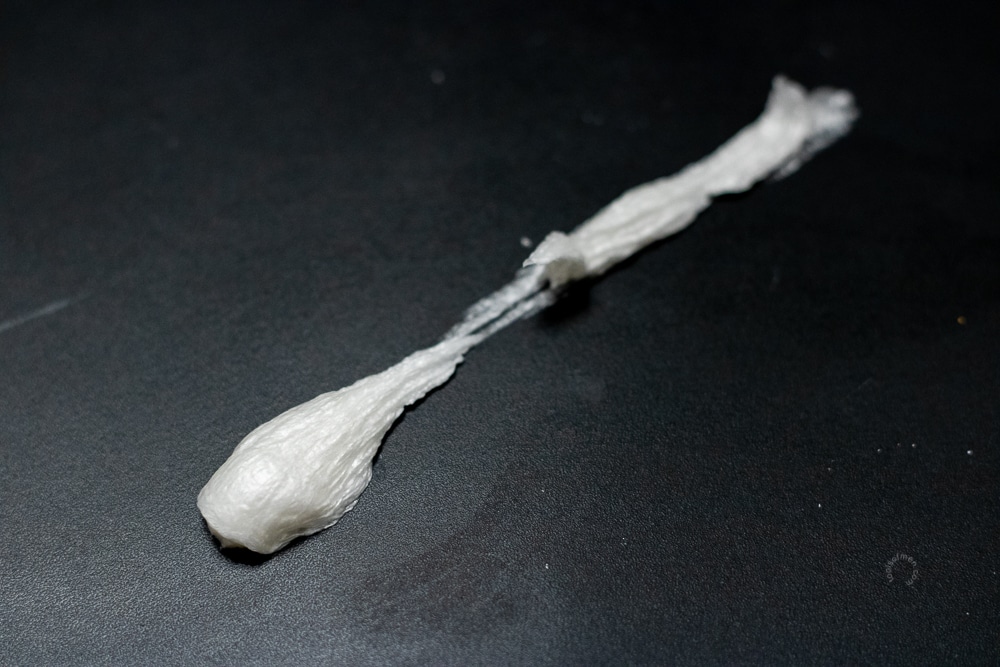
When using this shaving cream, it can either be applied as a hand lather or loaded into a shaving brush. You will only need about an almond-sized amount when shaving facial hair.
For comparison, here’s a look at traditional shaving cream in a tub form:
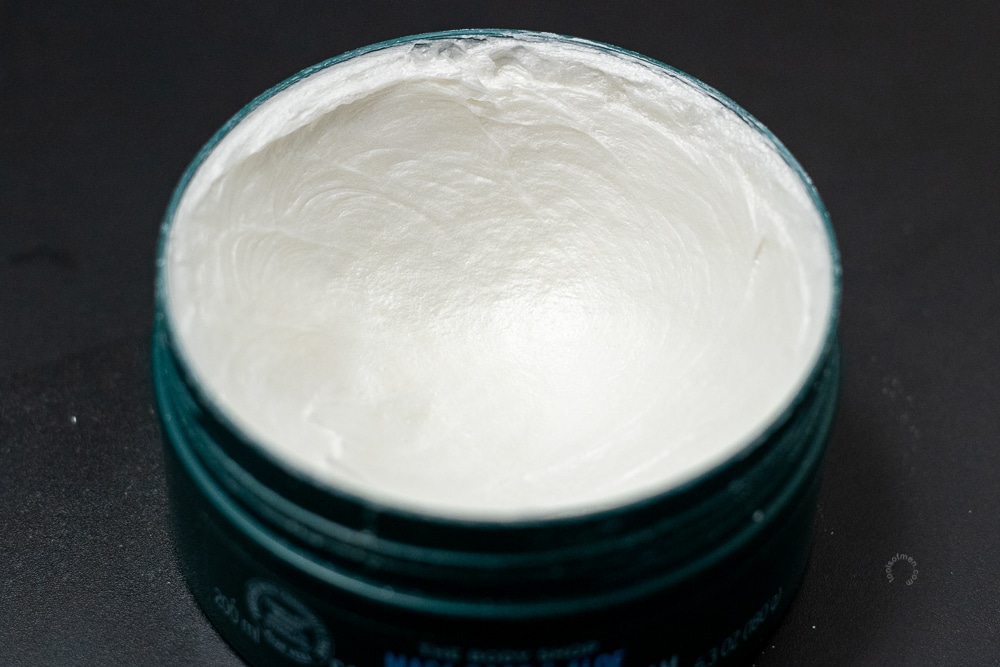
For this form of shaving cream, you can either scoop out the cream with your finger or load the shaving brush bristles’ tips in a few swirls.
Shaving Soap
Very similar to a standard bar of soap, shaving soap is made in a hard, puck-like form:
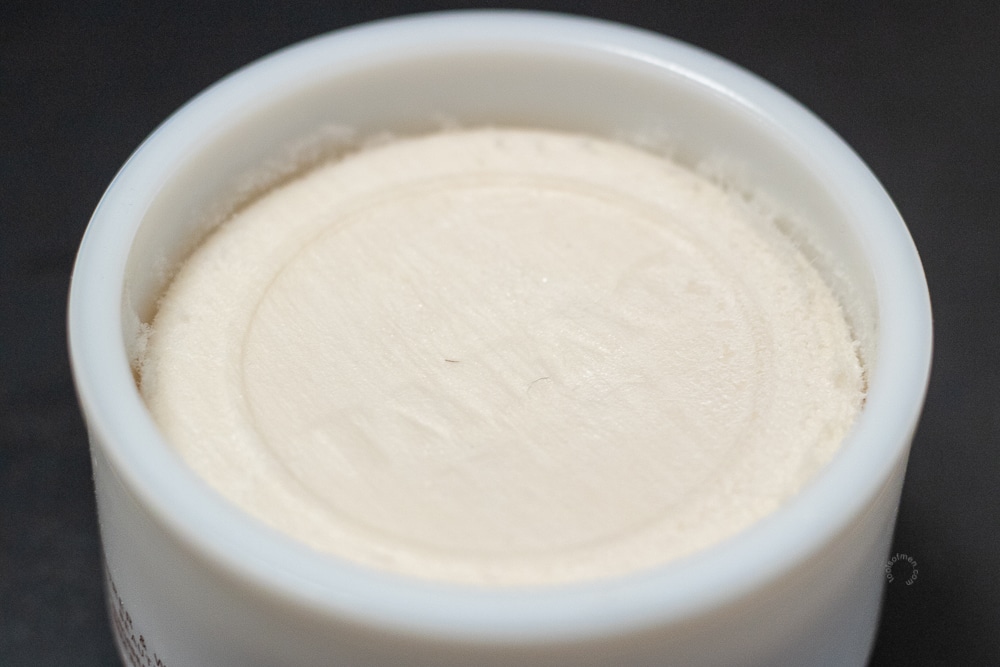
This type of shaving cream requires both water and a shaving brush for use. You are unable to generate a suitable hand lather with shaving soap.
Some shaving soaps are sold without a dish. You will either need to own a separate dish or shaving mug to use the soap when generating a lather.
Canned Shaving Cream
Mass-produced shaving cream available in a canned form can come in many different consistencies. Shaving cream, such as Barbasol pictured below, can generate a thick and rich lather:
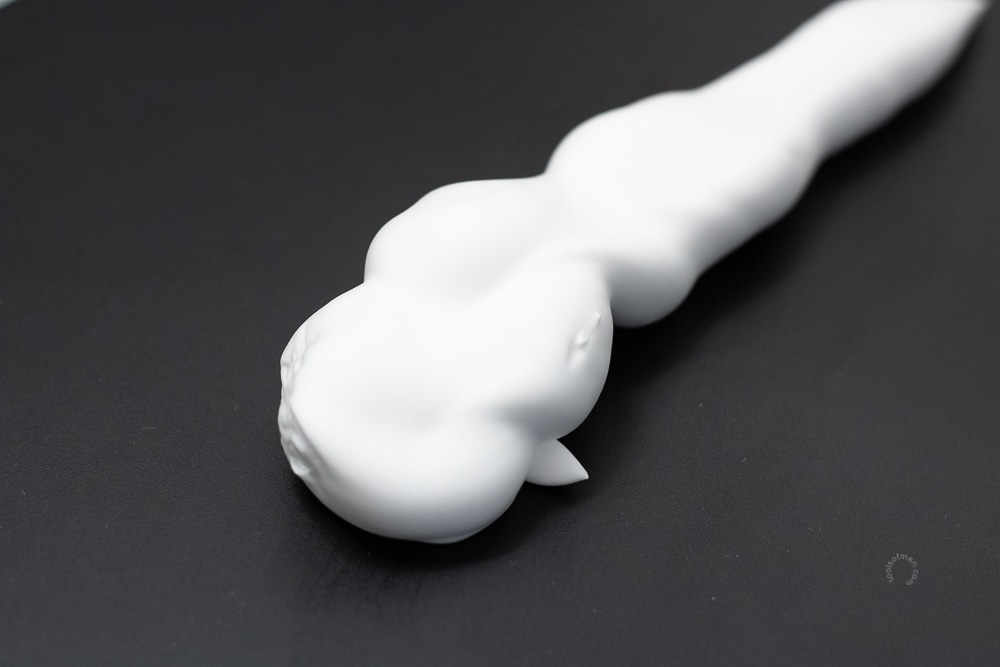
Modern shaving gel is another common type of canned shaving cream:
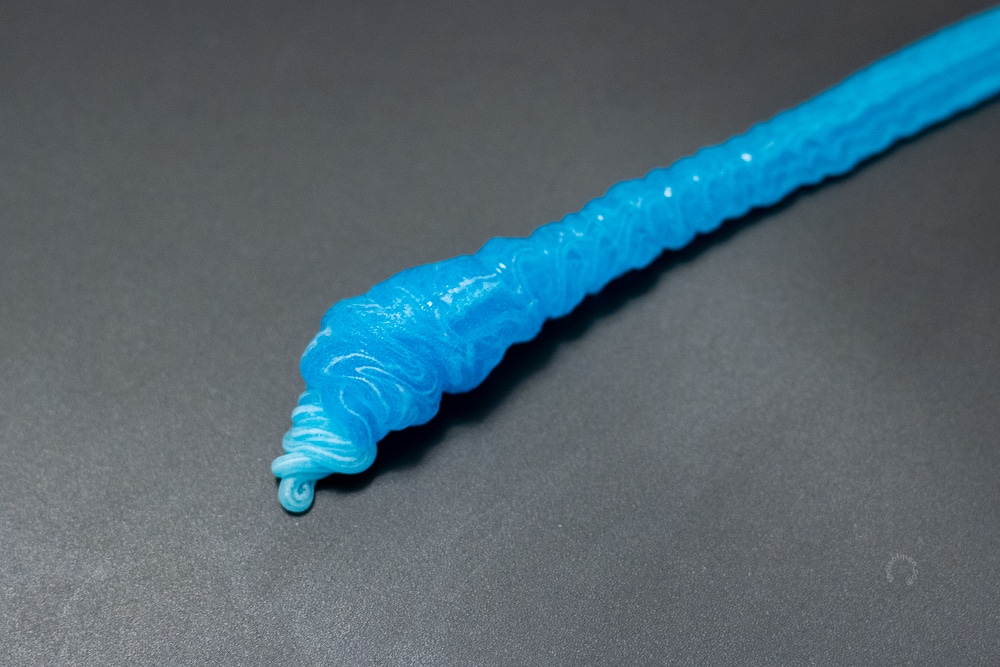
By simply spreading it onto the shaving surface, it activates into a slick and cushioned base:
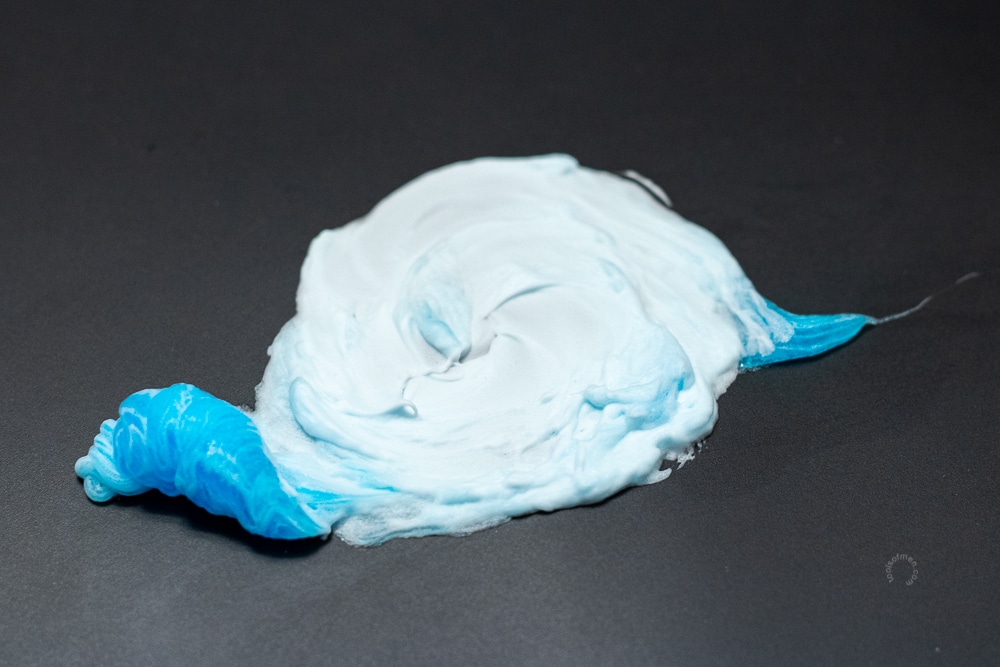
Latherless Shaving Cream
A recent addition to shaving cream varieties is latherless shaving cream. Available in a tube form, latherless shaving cream initially is a bit thicker:
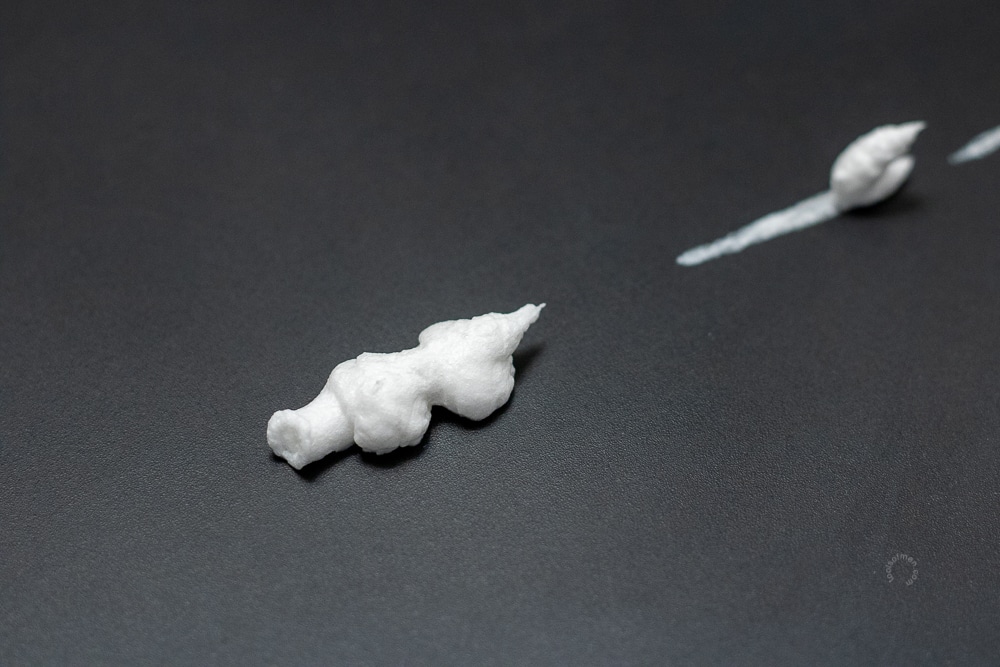
But once activated with warm water and worked into the surface, it becomes pretty thin but still retains its slickness.
Ingredients
When manufactured, shaving cream goes through a process called saponification. Saponification is the process of converting fat, oil, or lipid into soap (source).
Depending on the company, the fat, oil, or lipid required can either be sourced from animal fat or vegetable oil such as palm oil, coconut oil, etc.
Most companies that make shaving creams source the fat for saponification from vegetable oils. High-end shaving soaps often source their fat from animals and are described as being tallow-based. Tallow-based shaving soap is made from rendered beef fat.
Fragrance for shaving products also varies greatly. We will explore fragrance and scent later on in this article.
Application
When using shaving cream, always follow the company’s recommended application method, usually outlined on the side of the container. To provide you with general guidelines, here are the popular shaving cream types and whether they should be applied with a shaving brush or your hand:
| Shaving Cream Type | Brush Application | Hand Application |
|---|---|---|
| Traditional Shaving Cream | Yes | Yes |
| Shaving Soap | Yes | No |
| Shaving Gel | Yes | Yes |
| Shaving Foam | Yes | Yes |
| Latherless Shaving Cream | No | Yes |
These application methods outlined above are suggestions only. For example, while a gel and foam can be used with a shaving brush, they are more commonly applied with your hands.
Cost
The price you pay for shaving cream varies depending on size, quality of ingredients, type, and brand.
We analyzed the price of shaving creams and soaps sold at online specialty stores and an online drugstore. Here’s what we learned:
Specialty Shaving Creams
Specialty shaving creams we looked at included brands like Taylor of Old Bond Street, Cella, Speick, Truefitt & Hill, and other similar brands.
In total, we analyzed 1,441 shaving creams and shaving soaps. Of the 1,441 products we looked at, 319 were shaving creams, and 1,122 were shaving soaps.
Prices ranged from $1.99 for a small shaving soap stick to $156.99 for a tallow-based shaving soap:
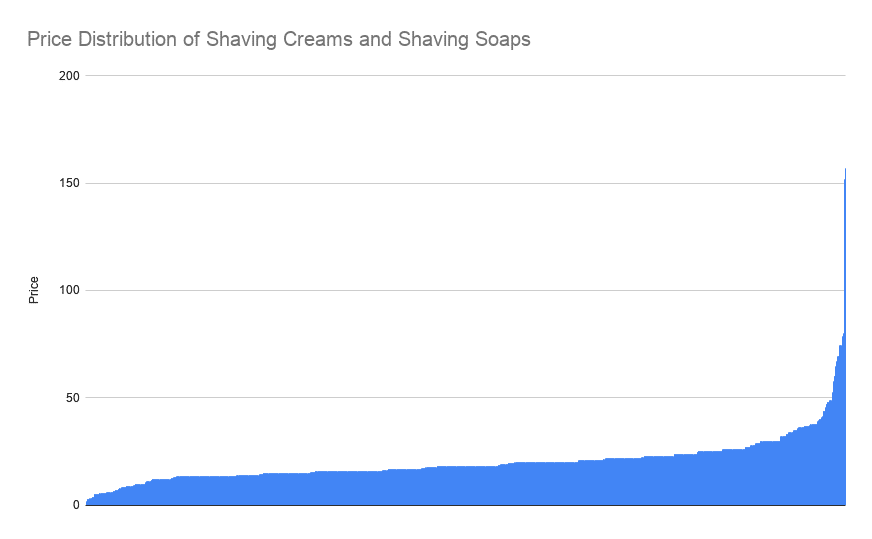
On average, shaving soaps were slightly cheaper than shaving creams. The average price for a shaving soap was $19.77. A shaving cream, on average, costs $21.90.
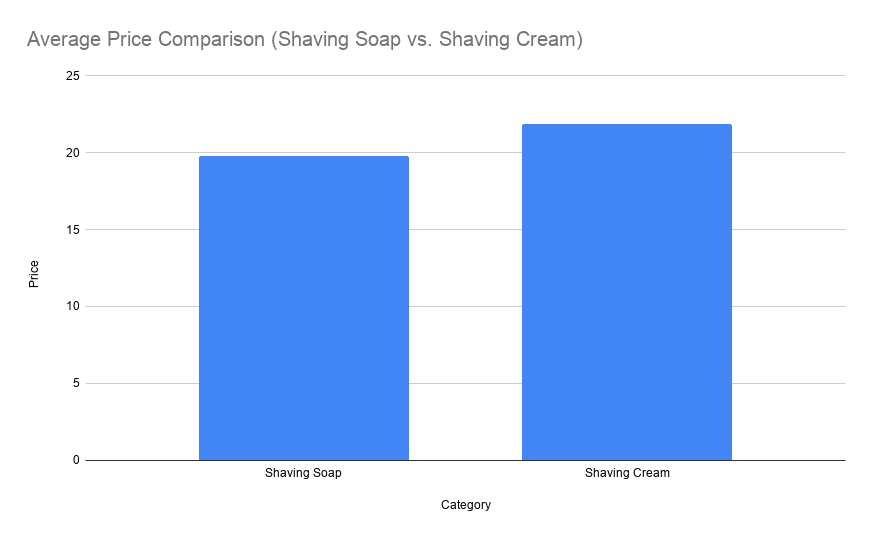
Within both categories of shaving products, strong options were available at any price point. Therefore, it comes down to personal preference when selecting a suitable shaving cream or soap to meet your needs.
Online Drugstore Shaving Products
In a separate analysis, we looked at pricing data from a popular online drugstore. In our research, we reviewed 29 shaving products. We found that, on average, the cost for a drugstore shaving cream was $9.83, roughly $10 cheaper when compared to a shaving cream from a specialty store.
One important note in our data is the category of shaving products. Shaving soaps, while popular with specialty shave shops, were not as prevalent in drugstores. Only three of the 29 products we analyzed from the online drugstore were shaving soaps – the rest were shaving gels, shaving creams, and latherless shaving creams.
Intended Use
All shaving products can be used on any part of your body to assist in removing hair. However, specific categories of shaving creams do work better than others, depending on the situation.
Generally, shaving soap or traditional shaving cream that requires a shaving brush for application is best used on facial hair and over the sink.
If you often shave in the shower, then a canned shaving cream or latherless shaving cream should be considered. By not requiring a shaving brush, the application is much easier here when compared to other shaving products.
Scent
The scent of shaving cream is subjective. You either will prefer a scented shaving cream or not. Scents for shaving creams vary from barbershop sandalwood to invigorating menthol. Experiment here if you are uncertain.
Additionally, should you shave below the belt, consider fragrance-free shaving creams to lessen your chance of mild skin irritation.
Synthetic Fragrances
Most mass-produced shaving products rely on a chemically-derived fragrance. The term fragrance (or parfum) on the ingredient label is an umbrella term for over 200 ingredients. The reason that individual fragrances aren’t disclosed is that they are protected as a trade secret (source).
Synthetic fragrances tend to be much stronger than natural fragrances.
Additionally, synthetic fragrances may cause irritation for some men with sensitive skin.
Natural Fragrances
Many premium shaving products, along with those made from small companies, often rely on natural fragrances. These natural fragrances are often sourced from essential oils.
While pleasant in scent, many medicinal claims related to these natural ingredients have not been scientifically proven.
Additionally, just because these products are natural doesn’t necessarily mean that they are safer in any way. Per the FDA, “many plants contain materials that are toxic, irritating, or likely to cause allergic reactions when applied to the skin.”
The takeaway; if there is discomfort during or after you have finished shaving, it may not be the razor or the technique, but the shaving cream itself.
Natural fragrances tend not to linger as long.
Razor Type
Shaving cream has a measurable impact on the comfort of the shave. However, it is only one part of the larger picture. Equally important is the razor. There are many different types of razors.
Most shaving cream types will be suitable for most razor types. I say “most” as there are some shaving creams that just don’t seem to play nice with certain razor systems (i.e. a thick shaving cream may clog a cartridge razor or electric shaver foil).
Therefore, it’s important to continuously test new brands and find which works well to provide you with a comfortable shaving experience.